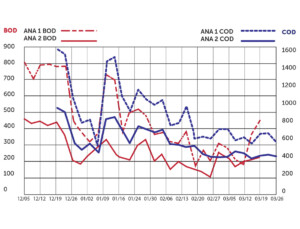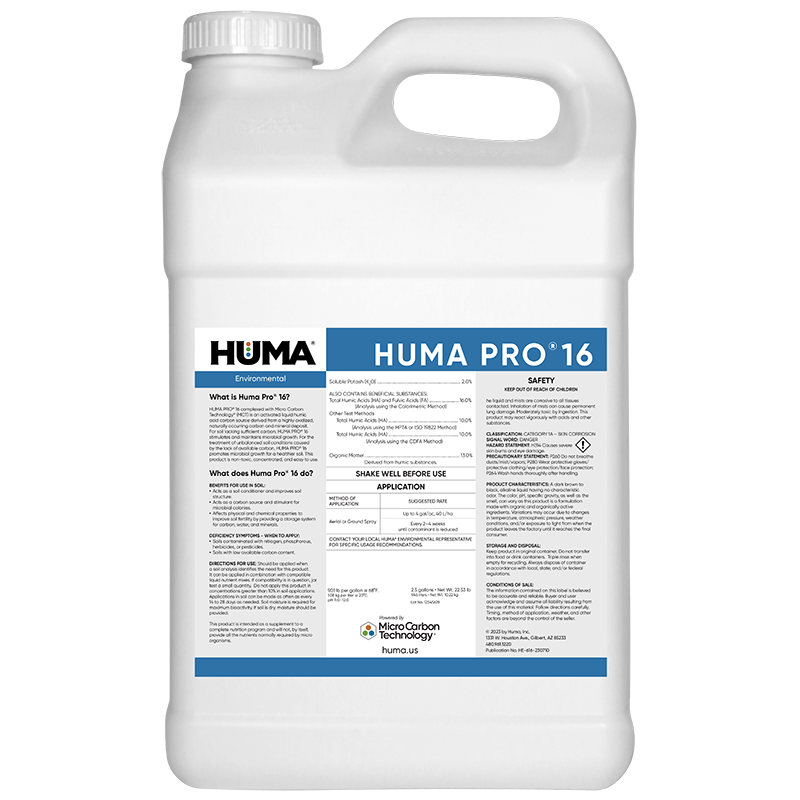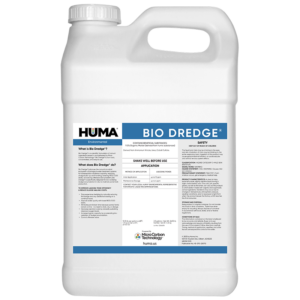Huma Pro® 16 (HE)
Benefits of Use:
- Acts as a soil conditioner and improves soil structure
- Acts as a carbon source and stimulant for microbial colonies
- Used in agriculture to help achieve soil sustainability
- Affects physical and chemical properties to improve soil fertility by providing a storage system for carbon, water, and minerals
Deficiency Symptoms—When to Apply:
- Soils contaminated with nitrogen, phosphorous, herbicides, or pesticides
- Soils with low available carbon content
FAQs
Related Products
Related Case Studies

Bio Genesis® Reduces Foam and Increases Stability at Idaho Municipal Wastewater Treatment Facility
Problem A municipal wastewater treatment facility in Idaho uses a small, activated sludge system to treat 35,000 gallons per day (gpd); waste activated sludge (WAS) is removed from the system approximately every 2 to 3 weeks. The system frequently experienced intermittent foaming and settling issues, as well as seasonal impact from grease relating to the

Bio Genesis® Reduces Foam and Increases Stability at Arizona Municipal Wastewater Treatment Facility
Problem A municipal wastewater treatment facility in Arizona uses an activated sludge system with 4 oxidation ditches to treat approximately 9 million gallons per day. The system frequently experiences intermittent foaming and settling issues. The operator was looking for a solution to the foaming and settling issues that would also provide operational stability throughout the

Bio Energizer® Reduces Costs and Turbidity in Paperboard Lagoons at Kentucky Papermill Wastewater Facility
Problem A paper mill wastewater facility was treating 940 tons of paper bags, recycled linerboard, and corrugating medium, daily. The mill was interested in improving wastewater operating efficiency and lowering operating expenses over their standard polymer usage. The plant was experiencing filamentous bacteria, solids, and bulking issues in the final clarifier. It was discharging 4,000
Related Blog Posts

It’s ALIVE!
by Heather Jennings, PE . . . the lagoon sludge layer, that is. I’ve seen many lagoons full of sludge, and the general attitude I find in the water industry is that the sludge layer is inert and really can only be mechanically dredged. To a certain point, that is correct: sand, soil, grit, plastics—basically

Use of Biostimulants for Upset Recovery in Paper Mill Wastewater Systems
By Heather Jennings, PE Two specific Probiotic Solutions® liquid bioremediation products were used at a large-scale paper mill in China to address system upsets caused by hydraulic loading from new upstream processes. The products involved are Bio Energizer® (BE)—a scientific formulation of organic acids, buffers, natural biological stimulants, micronutrients, and energy systems—and Micatrol® (MT), a

Bio Energizer® Reduces Cost and Turbidity in Paperboard Lagoons
A paper mill wastewater facility was treating 940 tons of paper bags, recycled linerboard, and corrugating medium, daily. The mill was interested in improving wastewater operating efficiency and lowering operating expenses over their standard polymer usage. The plant was experiencing filamentous bacteria, solids, and bulking issues in the final clarifier. It was discharging 4,000 pounds






